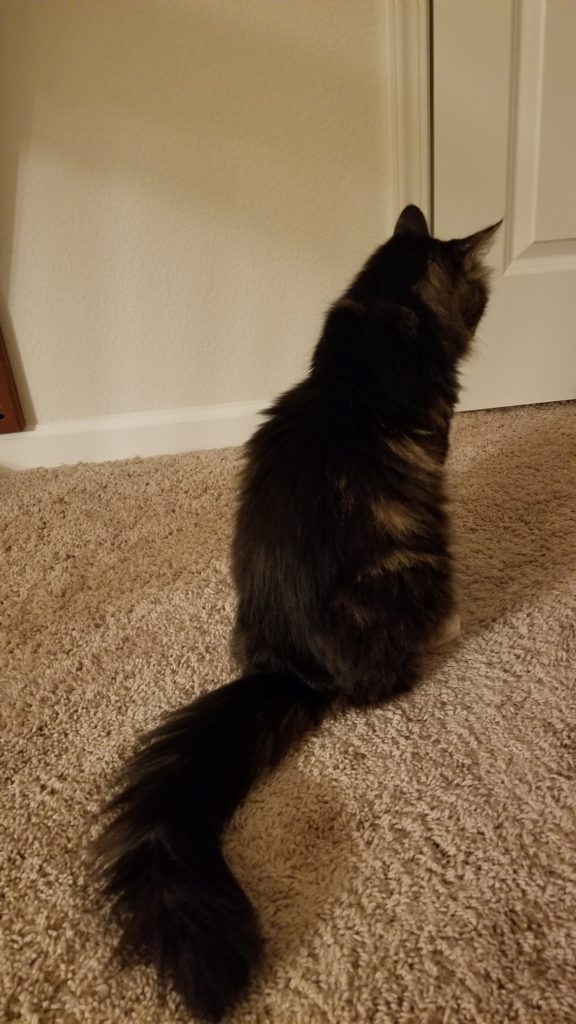
Whenever your cat has difficulty using a litter box, it’s imperative to remain calm and patient. Having a mess in your house and constant cleaning may be discouraging. It is crucial to understand the underlying cause of the problems and recognize that the cats are not trying to annoy you. Never punish your cat for missing a box.
We researched common reasons for litter box problems and will discuss how to address them.
Common reasons why cats have difficulty using a litter box.
Multiple variables affect your cats’ toileting behavior. Some medical conditions may contribute to changes in the cats’ bathroom habits. The Spruce Pets identify health problems related to your cat’s ability to use a box properly.
According to the source, diabetes and kidney disease cause increased urination. The cat may not be able to get to the box timely due to the frequent need to urinate.
Painful urination associated with urinary tract infections can be another reason for missing a litter box. A cat may experience constant pain and discomfort.
An older cat may suffer from arthritis and have difficulty climbing into the box.
Other reasons for toileting issues may be related to the availability of the litter boxes, the sufficient number of them, the appropriate shape and size of the box, smells, and how clean it is.
Contact your veterinarian.
When a cat has difficulty using a litter box, always consult a professional veterinarian. Your cat’s doctor will rule out medical issues and develop a treatment plan.
Place a litter box in the right place.
The right location of the litter box may make a difference in your cat’s toileting. Place the box in a quiet, clean location free of noise and commotion. Sudden noises can scare cats and discourage them from using the box. Make sure to keep the small children away from the cats’ toilet. If your cat feels disturbed, she will not feel comfortable using the box.
How many boxes do I need?
Darryl Roberts from SNAP Cats recommends the number of litter boxes equal to the number of cats in the household, plus one. For example, if you have one cat, you will need two boxes. If your household has 4 cats, you will need 5 litter boxes in your place.
The shape of the litterbox.
Cats prefer to use a toilet in an open area and don’t need privacy while going to the bathroom. Cats may feel trapped when using a covered litter box. Additionally, another cat may corner them in an enclosed space. Choose an uncovered litter box and use a litter mat, if needed.
Height of the walls.
Make sure that your cat can easily jump into the box. Avoid the sidewalls that are too high and choose a box that is appropriate for your cats’ age. For seniors, and cats that are overweight or have arthritis, buy a box with lower sides. If you are concerned about spreading litter outside of the box, use a litter-catching mat. Place the box in an area that is easy to clean, like a tile or linoleum floor.
What type of litter to use?
Doctor Em from the Vet Med Corner advises using a natural clumping litter without dust and scent. Dust can irritate the cat’s nose and eyes. Perfume smell is pleasant for humans but is not good for cats. Cats may have an allergic reaction to scented litter. The strong smell may discourage your kitty from using the litter box.
Litter Box Care.
Dr. Em from the Vet Med Corner suggests scooping the boxes at least twice a day. Such a schedule will allow you to monitor your cat’s elimination patterns and detect an abnormal situation faster. According to the source, wiping the box walls weekly with wet wipes will help to keep the litter box clean and free of smells. The veterinarian also recommends changing the litter every four to six weeks and washing the box with soap and water.
In conclusion.
If you follow all the recommendations, have a sufficient number of litter boxes, and keep them clean and odor-free, the cats can easily access the boxes and still have difficulty using the toilet, call your veterinarian.
The Article Sources:
SNAP Cats: https://www.snapcats.org/
The Spruce Pets: https://www.thesprucepets.com/
The Vet Med Corner: https://www.youtube.com/channel/UC64XB_0OeIWFhmN9ZmVSgMg

2 thoughts on “How to Address The Litter Box Issues.”
I need to to thank you for this good read!! I definitely loved every little bit of it. I have you book-marked to look at new things you postÖ
You need to be a part of a contest for one of the greatest websites on the internet. Im going to recommend this site!